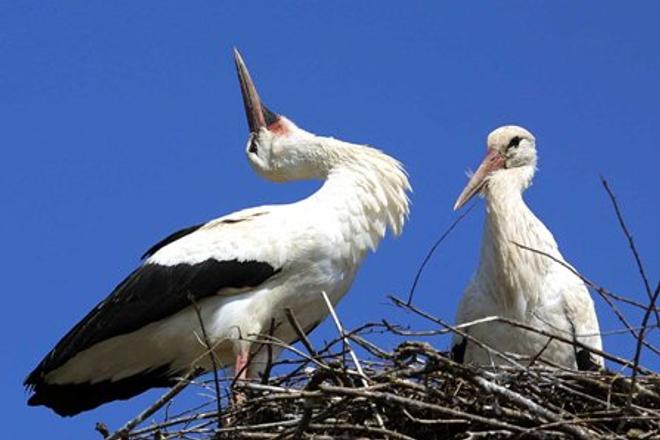THOUGH not many big birds nest in trees in this region, Slovaks can catch a close up look at a flock of white storks nesting above the March Auen (Morava floodplains) near the Austrian village of Marchegg, ornithologist Marek Brindzík told the TASR newswire. The sight of these astonishing birds can be seen from a high wooden observation point across the Morava River in Slovakia.
These stately birds with long necks and wide wingspans migrate with the seasons, often returning to their old nests. Usually they renew their nests by adding more material and as the seasons pass the nests get bigger and heavier and sometimes reach weights up to a ton. The birds only move on to new nests when the trees can no longer withstand the weight and fall.
Most white storks now tend to nest on chimneys and man-made constructions so the March Auen natural reserve is relatively unique. The reserve was established in 1970 and is covered under the Ramsar Convention, an intergovernmental treaty that provides the framework for national action and international cooperation for the conservation and wise use of wetlands and their resources. The wetlands surrounded by floodplain forests represent a rare ecosystem comparable to the rainforests that are disappearing in other parts of the world. TASR wrote that many other unusual species of animals and plants can be found in the natural reserve as well the nesting storks.


 Storks nesting. (source: Sme - Ján Krošlák)
Storks nesting. (source: Sme - Ján Krošlák)